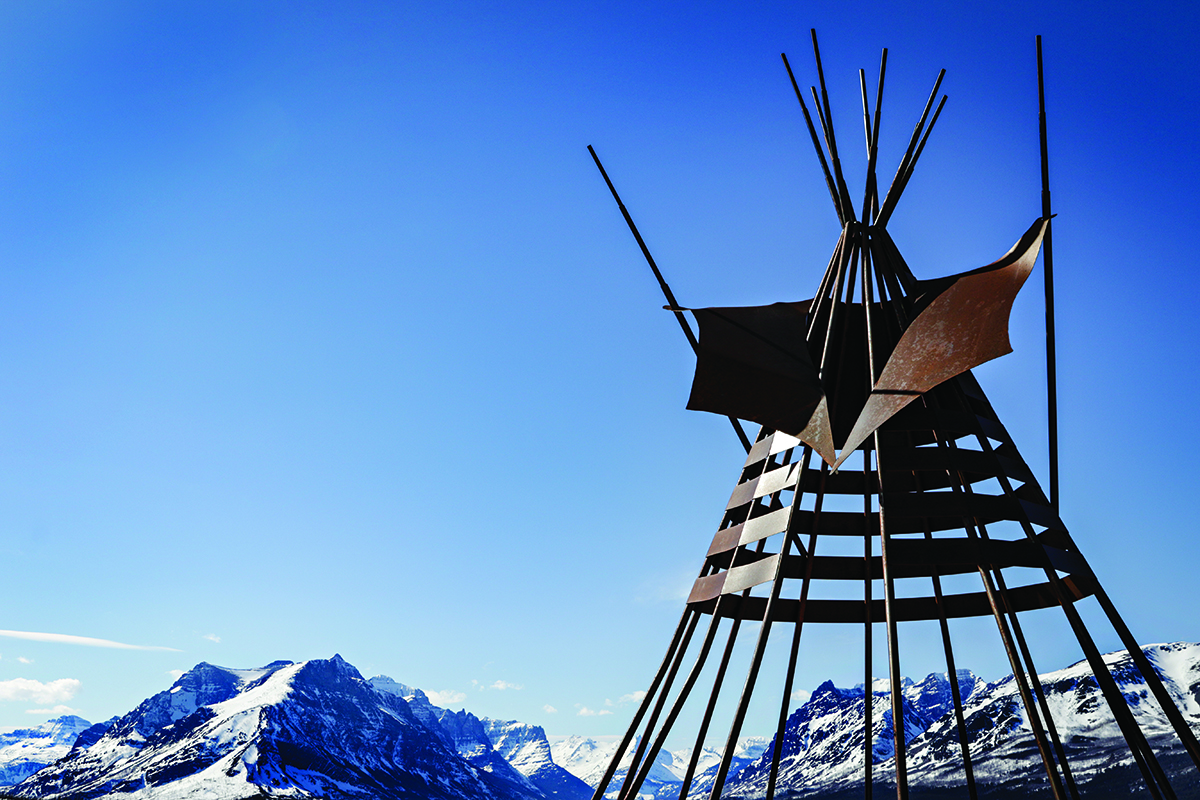
Partners in Prevention
The Blackfeet Nation enacted strict virus control measures that included cutting off access to the park’s east side, a decision that kept infection rates low on the reservation and won support from park leaders
Glacier National Park exists on ancestral Blackfeet Tribal land — mountains, lakes and streams that were sold to the U.S. government for $1.5 million dollars as miners and settlers rushed west as part of the copper and gold rushes of the late 19th and early 20th century. And while the Blackfeet are no long technically its owner, the land maintains its spiritual significance to the tribe and its members.
Today, the Blackfeet Nation borders the east end of Glacier Park, with the central town of Browning just 30 miles from the entrance at St. Mary, and places like Chief Mountain are among the most sacred on earth. Blackfeet have taken vision quests in places like Many Glacier, East Glacier, Two Medicine and Chief Mountain for generations, and traditional ceremonies like the Beaver Bundle and Thunder Pipe Bundle can trace their origins to the area that is now East Glacier.
More than a century has passed since the land transferred from the tribe to the U.S. government, and while the terms of that deal and follow-through — or lack thereof — on that century-old sale remain somewhat contentious, tribal leaders and park officials work hard to maintain open lines of communication and a symbiotic relationship.
So in June 2020, when Glacier Park re-opened to visitors after a more than two-month closure due to the COVID-19 pandemic and the Blackfeet weren’t ready to do the same, park officials stood by them and never wavered.
The Blackfeet border would remain closed throughout the 2020 tourist season, a decision made by the Blackfeet Tribal Business Council (BTBC) that cut off public access to the park’s eastern entrances, including Two Medicine, Many Glacier and the east entrance to Going-to-the-Sun Road at St. Mary. As a result, Going-to-the-Sun Road operated as a one-way in, one-way out highway for the first time in its history, something that may have contributed to major congestion on the west end.
So the BTBC’s decision certainly made life more difficult on some travelers, but the safety measures also likely saved Blackfeet lives. The reservation imposed some of the strictest restrictions in the state, and while American Indians and Alaska Natives were 2.2 times more likely to contract COVID-19 and 3.8 times more likely to die from it, the Centers for Disease Control and Prevention (CDC) used the Blackfeet as a model for how strict mitigation measures work when applied.
In a newsletter published by the CDC on April 9, they outlined how the Blackfeet response to COVID, including mandatory masking, strict limits on public gatherings and targeted stay-at-home orders, kept the spread of the virus manageable for most of last year.
From the beginning, and epitomized by their decisive action to keep their borders closed even as the rest of the park opened, the BTBC was aggressive. Leaders closed down schools, canceled ceremonial events, and placed limits on local businesses even before the first case of the virus was detected.
Once the virus was detected on June 16, the BTBC announced it would keep its border closed through the end of the tourist season, again with the support of park leaders, and announced remote learning would be implemented in schools through the fall semester. Less than two weeks later, the reservation was placed under a mandatory stay-at-home order that lasted more than a month, with violators subject to up to a $500 fine. The result was the near eradication of the virus on the reservation in July, with just 0.10 cases per 1,000 people.
When the BTBC did begin the relax restrictions, on July 31, new cases stayed relatively low but by September the worst outbreak of the pandemic was in full effect. Daily cases peaked at 6.40 per 1,000 people in early October, a 63-fold increase from July.
Analyzing the data, the BTBC again acted swiftly, enacting a new stay at home order on Sept. 28 with severe penalties — a fine of up to $5,000 or three years in jail — for those who disobeyed. The CDC noted the action again stopped the virus cold, and cases came back down later in the fall.
When it implemented its shutdowns, the BTBC also did so with a safety net in place for families that might be adversely affected. In the weeks before Thanksgiving, for example, dinners were delivered to families to keep grocery stores clear of traffic, and during the shutdowns quarantining or infected residents unable to isolate at home were given temporary housing at two local hotels. A “COVID-19 dispatch team” also delivered medications and food to community members as needed.
And throughout the pandemic, park leadership remained supportive. Even as the calendar flipped to 2021, park officials said any decision about accessing the eastern end of the park would lie with the BTBC. In March, they made their decision and re-opened the border under a “New Normal.” That means this year, for the first time in two seasons and provided conditions remains safe, travelers will once again be welcomed to take in the wonders that lie on the park’s spectacular but sometimes overlooked east side.